What is Chronic Shoulder Instability?
This is a chronic condition that causes frequent dislocation of the shoulder joint. Anterior shoulder instability is a common form of this condition, particularly among young and active individuals.
Causes of Shoulder Instability
An anterior dislocation occurs when the end of the humerus (ball portion) partially or completely dislocates from the glenoid (socket portion) of the shoulder, leading to shoulder instability. A partial dislocation is referred to as a subluxation whereas a complete separation is referred to as a dislocation.
Risk Factors for Shoulder Dislocation
The risk factors that increase the chances of developing this instability include:
- Injury or trauma to the shoulder
- Falling on an outstretched hand
- Repetitive overhead sports such as baseball, swimming, volleyball or weightlifting
- Loose shoulder ligaments or an enlarged capsule
- Injuries to the glenoid rim, which can increase the risk of shoulder instability
- Issues with the humeral head, which can also contribute to shoulder instability
Symptoms
The most common shoulder instability symptoms include pain with certain movements of the shoulder, popping or grinding sound that may be heard or felt, swelling and bruising of the shoulder seen immediately following subluxation or dislocation.
Visible deformity and loss of function of the shoulder occur after subluxation or sensation changes such as numbness. Partial paralysis can occur below the dislocation because of pressure on nerves and blood vessels. Recurrent instability is a common issue for those with chronic shoulder instability.

Diagnosis of Shoulder Instability
Diagnosing shoulder instability typically involves a comprehensive approach that includes a physical examination, a detailed medical history, and various imaging tests. During the physical examination, the doctor will assess the shoulder for signs of instability and general looseness in the ligaments. One common test involves asking the patient to try to touch their thumb to the underside of their forearm, which can indicate ligament laxity.
The doctor will also discuss the patient’s symptoms and medical history to understand the frequency and circumstances of any dislocations or subluxations. Imaging tests such as X-rays, magnetic resonance imaging (MRI), and computed tomography (CT) scans are often used to confirm the diagnosis. These tests help identify any structural abnormalities, such as torn or stretched ligaments, and provide a clear picture of the shoulder joint’s condition. This thorough diagnostic process is crucial for developing an effective treatment plan tailored to the patient’s specific needs.
Treatment Options for Instability of the Shoulder
Physical Therapy and Other Conservative Treatments
The goal of conservative treatment for instability is to restore stability, strength and a full range of motion. Conservative treatment measures may include the following:
It is crucial to evaluate anterior instability when considering conservative treatments. A comprehensive medical history and physical examination are essential to assess the extent and characteristics of anterior instability, including symptoms, past injuries, and conditions that could contribute to ongoing instability.
Closed reduction: Following a dislocation, your surgeon can often manipulate the shoulder joint, usually under anesthesia, realigning it into proper position. Surgery may be necessary to restore normal function depending on your condition.
Medications: Over-the-counter pain medications and NSAIDs can help reduce the pain and swelling. Steroidal injections may also be administered to decrease swelling.
Rest: Rest the injured shoulder and avoid activities that require overhead motion. A sling may be worn for 2 weeks to facilitate healing.
Ice: Ice packs should be applied to the affected area for 20 minutes every hour.
Surgery for Anterior Shoulder Instability
When conservative treatment options fail to relieve this instability, your surgeon may recommend shoulder stabilization surgery. Shoulder stabilization surgery is performed to improve the stability and function of the shoulder joint and prevent recurrent dislocations. It can be performed arthroscopically, depending on your condition, with much smaller incisions. Surgical interventions may also address posterior shoulder instability.
Arthroscopy is a surgical procedure in which an arthroscope, a small flexible tube with a light and video camera at the end, is inserted into a joint to evaluate and treat the condition. Surgery can help stabilize an unstable shoulder, addressing issues such as hyperlaxity and repetitive overhead motions.
The benefits of arthroscopy compared to the alternative, open shoulder surgery, are smaller incisions, minimal soft tissue trauma, less pain leading to faster recovery.
Common Questions addressed by Dr Kruse:
- What Happens if Shoulder Instability Is Left Untreated?
- How Long Does It Take for Shoulder Instability to Heal?
- Test for Shoulder Instability
- Can You Fix Shoulder Instability?
Chronic Shoulder Instability
Chronic shoulder instability is a condition where the shoulder joint remains persistently unstable, leading to repeated dislocations or subluxations. This instability can result from various factors, including traumatic injuries, repetitive overhead motions, and even genetic predispositions. Individuals with chronic shoulder instability often experience a range of symptoms, such as shoulder pain, weakness, and limited mobility in the affected shoulder.
Treatment for chronic shoulder instability typically involves a combination of physical therapy, activity modification, and, in some cases, surgery. Physical therapy focuses on strengthening the muscles around the shoulder joint, improving stability, and enhancing the range of motion. Activity modification may involve avoiding activities that exacerbate the instability, such as certain sports or overhead movements. In more severe cases, surgical intervention may be necessary to repair or tighten the ligaments and restore stability to the shoulder joint.
Prevention and Maintenance
Preventing shoulder instability requires a proactive approach that includes proper training, warm-up and cool-down exercises, and adequate rest and recovery. Athletes, in particular, can reduce their risk of shoulder instability by incorporating exercises that strengthen the muscles surrounding the shoulder joint, such as the rotator cuff muscles. These exercises help provide better support and stability to the shoulder.
Additionally, athletes should avoid repetitive overhead motions and take regular breaks to rest and stretch their shoulders. Maintaining good posture and avoiding heavy lifting or overhead activities can also help reduce the risk of shoulder instability. By following these preventive measures, individuals can maintain a healthy shoulder joint and minimize the likelihood of developing chronic shoulder instability.
Postoperative and Rehabilitation Care
After undergoing surgery for shoulder instability, patients typically require a period of postoperative and rehabilitation care to ensure proper healing and recovery. Initially, the shoulder may be immobilized with a sling to protect the surgical repair and allow the tissues to heal. As the healing progresses, a gradual increase in exercises is introduced to improve the range of motion and prevent scarring.
Physical therapy plays a crucial role in the rehabilitation process, helping to restore strength, flexibility, and range of motion in the affected shoulder. A tailored physical therapy program will guide patients through exercises designed to rebuild shoulder stability and function. It’s essential for patients to follow their doctor’s instructions carefully and attend all scheduled follow-up appointments to monitor progress and address any concerns. With diligent postoperative care and rehabilitation, patients can achieve optimal outcomes and return to their daily activities with a stable and functional shoulder.
